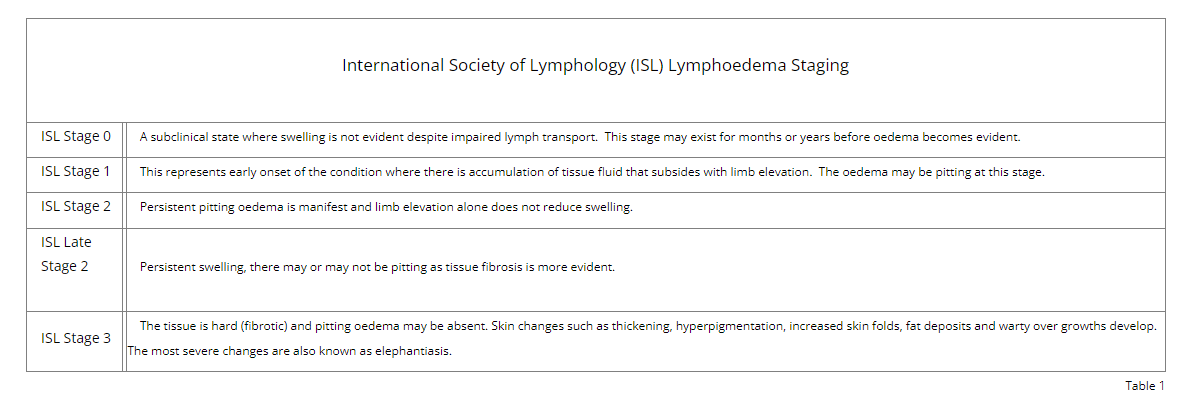
Lymphoedema is a condition that results in tissue swelling due to the accumulation of excessive amounts of protein-rich fluid in one or more areas of the body. This is due to a failure of the lymphatic system and occurs when the demand for lymphatic drainage exceeds the capacity of the lymphatic circulation.
The established classifications of lymphoedema are:
Primary: due to a genetic malformation of the lymphatics. Onset of swelling may not present until adolescence or adulthood
Secondary: to damage or destruction of lymph nodes or lymphatic vessels. This may occur with surgery and/or radiotherapy related to cancer treatment, recurrent cellulitis, or following injury (trauma or surgery to other organs or structures in the body)
The early warning signs of lymphoedema can be intermittent and may include:
*Transient swelling of a limb or other region of the body. Swelling may be aggravated by heat, overuse, sustained positions, inappropriate external compression, due to underwear or garments, prolonged activity, and be more obvious by the end of the day
*Feelings of aching, heaviness, stiffness in the affected body part
*Decreased range of movement in the affected body part
*Tightness of the affected body part – clothing, jewellery or shoes may feel tighter
*Recurrent cellulitis
Left untreated, will lead to progressive swelling over time. However, can be reduced and managed with appropriate intervention. The stage, location and severity of the lymphoedema, together with individual circumstances of the client

Best practice management has a multidisciplinary approach and is provided by qualified lymphoedema therapists. The treatment method is conservative and in Australasia is termed Complex Lymphoedema Therapy (CLT). Older alternative terminologies are Complex Physical Therapy (CPT) or Complex Decongestive therapy (CDT).
CLT consists of the following components
* Banadaging and Compression Garments
* Exercise
* Education
* Skin care
Treatment is individualized for each client and not all components of treatment may be necessary in all cases.
For More Information about lymphoedema, Check out the Australian Lymphology Association Web page